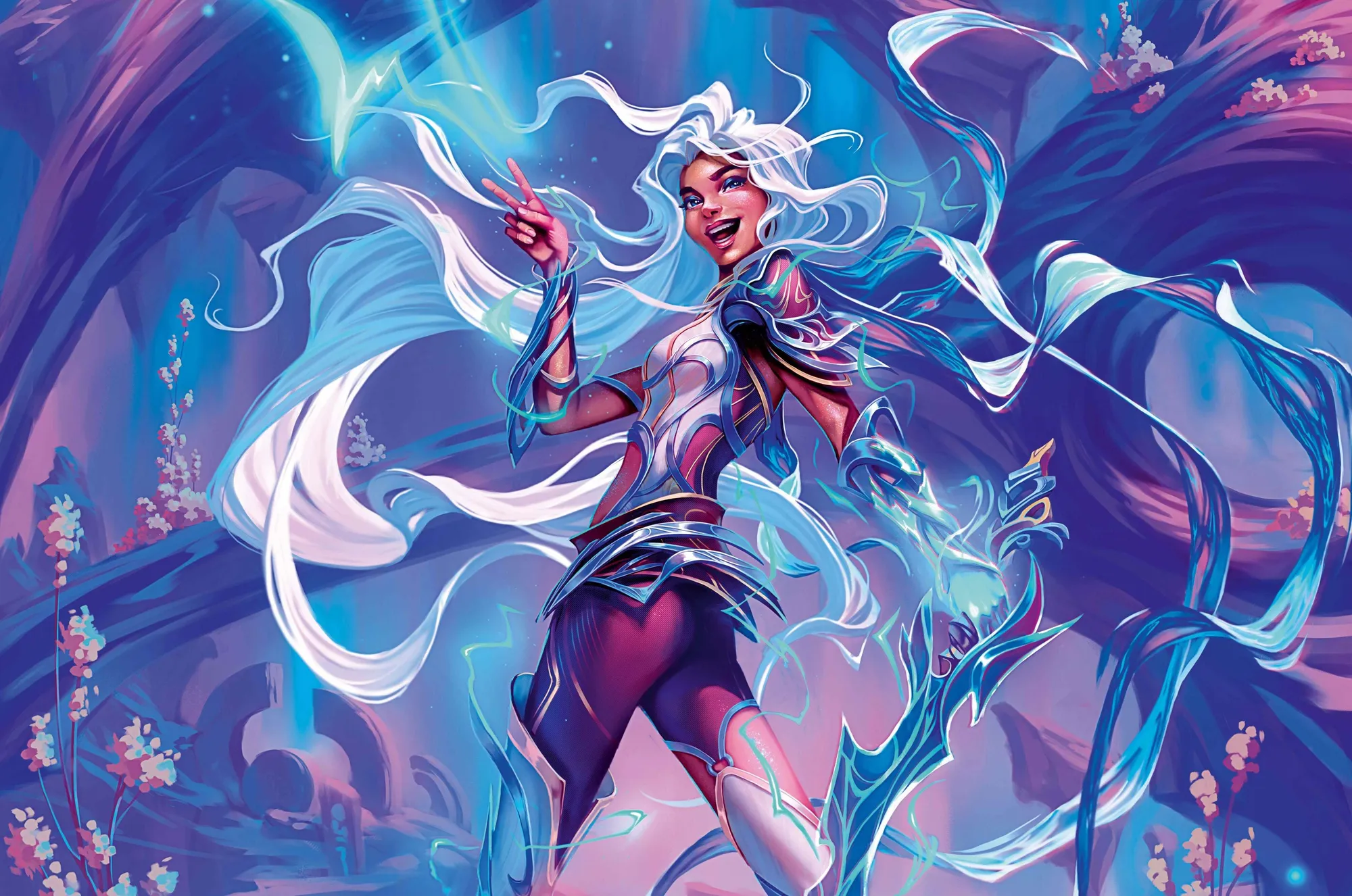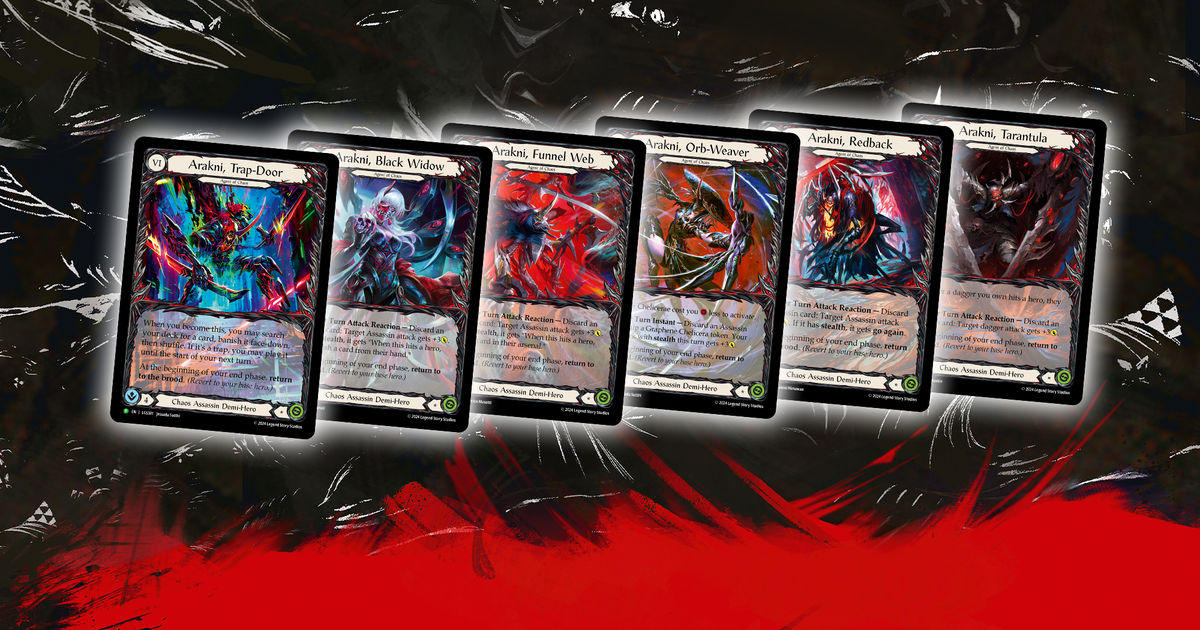The Southern Lights: Adapting Aurora for Memphis
-
 Tommyb5k
Tommyb5k - 11 Feb, 2025

For Memphis, I decided to play Aurora again.
I knew The Hunted would tempt me to switch to another hero. Especially once I learned more about the retrieve Ira deck lists utilizing Up Sticks and Run and Pick Up the Point. I love aggro and I love ninja, so that deck is absolutely on my radar going into Road to Nationals season. Though after playing some Ira, I still found that I preferred Aurora’s playstyle. Particularly Channel Lightning Valley, Lightning Press, and Vaporize//Shock are so fun and powerful it felt wrong playing without them (even if Mask of Momentum is a pseudo CLV). Playing Aurora into a new meta meant starting from scratch, and while placing 15th at Portland was fantastic, I knew I had lost some edges in deck construction.
So before getting into the list and how it differs from my Portland deck, what did I expect?
In Portland, I knew Runeblades would be everywhere, and I was right! Aurora was the highest represented deck, and I played against her more than any other hero (3 times to be exact). My Vaporize//Shock tech was powerful in these games, and in at least two of them was the difference between a win and a loss. In Memphis, I had a feeling Runeblade’s popularity wasn’t going anywhere, especially as Viserai players have begun to fully tune all the new tech they got from Rosetta. Similarly, I anticipated that ninja would be popular. Fai players have spent an eternity begging for Draconic Ninja support, and I knew Cindra would pull attention there. Retrieve Ira saw a lot of hype online to boot and contributed to a preemptive ban on anticipated power level (rest in piss Zephyr Needle)! Zen’s strength and popularity is also as relevant as ever, considering Battle Hardened: Toronto ended in a Zen mirror. Lastly, Assassin was guaranteed to appear. Arakni, Marionette has oodles of cool and Nuu can easily incorporate goodies from HNT. So Runeblade, Ninja, and Assassin were my targets, while still being mindful of Enigma and the many grindy decks that can take Aurora by surprise (Victor, Florian, etc.). With such a wide spread of heroes and archetypes to address, overlaps in sideboard tech become more important than ever.
So, what’s different in the list?
Starting with the cuts:
Immediately the biggest change is the blue count. Anything less than 8 blues felt unimaginable prior to Portland, until I decided to make room in the mirror by cutting almost all my blue cards and seeing how powerful that was. So now, blues for blues’ sake is 6 maximum, and in many matchups 3 of those get cut.
I’ve also cut down on the combo. Flicker Wisp + Arc Lightning is so powerful, and it turns out it is powerful enough without requiring the support of two pieces of equipment (and sideboard!) slots.
To my despair, I also cut Blast to Oblivion. I still believe in the card’s strength, but Aurora can be more consistent without relying on it. If it was a 3-block it would be a staple, but that isn’t saying much.
Snag and Remembrance were included as tech to help the Nuu matchup and Count Your Blessings (Remembrance also to combat Enigma). While these may still be relevant going forward, there are better options for addressing a wider range of opponents. Not to mention Snag does not work into the Agents of Chaos.
So, with those cuts, what are we left with?
Pudding Tam came out with a hyper efficient deck list that brought him to top 8 in Calling: Kuala Lumpur and a victory at Battle Hardened: Hong Kong. This list helped me realize a lot of the ways in which I was too fair in my approach to building Aurora. It is far less necessary to be mindful of Fatigue when you can efficiently get 4 points out of almost every card in your deck! Furthermore, it is much easier to address aggro mirrors when some of those 4s are defensive. Notably, I did not love all his inclusions. For starters, Scar for a Scar and Balance of Justice both feel unnecessary for Aurora in the current meta, and don’t satisfyingly solve her consistency problems regarding Lightning starters. I also feel that Poison the Well doesn’t do enough to address CYB and is just generally less necessary now that playing all 6 (instead of 9) provides an average of 5 life per 2-cost-card rather than 6.
Now for my additions.
Generally speaking, the “core” is Just Good and largely hasn’t changed in Aurora since Mercy’s World’s Osaka deck. That said, we have plenty of room in our inventory to include unique tech! So, remember, our targets were Runeblade, Ninja, and Assassin. How do we address these decks? First, Warmonger’s Diplomacy is a 3 of. It just must be. The card is good, and it answers two matchups we don’t love: Viserai and Azalea. It’s not perfect but it’s a block 3 and what we have. I should have brought it to Portland. Before The Hunted came out, Sink Below became the newest addition that I felt confident in. It filled Snag’s role against Nuu, while also addressing Azalea and allowing us to play a midrange plan into other heroes (like Zen) when necessary. With the release of The Hunted, Shelter from the Storm grabbed my attention immediately. Aurora is a low blue deck, and one problem she ran into against Runeblades was dealing with the large amount of unanswerable arcane damage we’d take from runechants. Shelter’s flexibility to answer those runechants, address multiple breakpoints, or just be a block 4 from arsenal made it a great candidate to run instead. For a long time, I felt medium on Static Shock because it isn’t a Lightning card, which causes problems. But the other options for good rate Lightning cards block poorly and/or aren’t usually starters (see Blast to Oblivion). So Static Shock is back as an effective block 3 that synergizes with our effects like Electrostatic Discharge and Lightning Press. Effectively copies 4-6 of Arcanic Shockwave. This or Arcanic Shockwave will be the cut for Skyzyk once available, but I’ll save that for a later article. Lastly, **That All You Got? ** is the most recent inclusion to the deck that I have really enjoyed. I think this card is interesting because it addresses some of the problems that Ninjas present while also having text in the mirror. Tiger Taming Khakkara, second Kodachi, and Star Fall are all amazing targets for this card. And it just happens to have text into Dash and assassins (even if just a d-react from arsenal). Given Ira’s popularity online, I figured this would be the best bet to address what should’ve been a popular pick for the event. When the Cold Foil Cartel started testing the card, my teammates weren’t super sold on running 9 d-reacts in our aggro deck, but I feel confident that the midrange plan is necessary at times, and TAYG is how we regain value against kodachis and Kassaya-enabled Khakkara swings. Additionally, the card allows us to have better control over the pace of the game in the mirror, while sometimes functioning as a 0 for 5 vs. the occasional Star Fall.
What’s Next for Me and CFC
With RtN season rapidly approaching, it has been difficult to find the time to write these pieces. That said, look forward to my upcoming tournament report as well as a new article from a first time Overpit.ch contributor in the near future!


